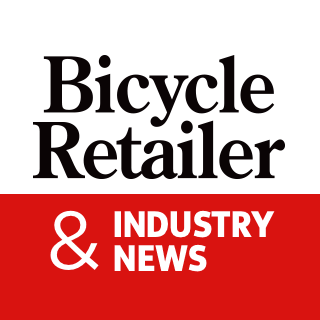I first met Mark Sperling, founder and head of Authenticity.co, at the Cycle Of Influence conference in 2024. Sperling was one of the panelists in a discussion I moderated, and two things about his company struck me right away.
The first was the sheer importance of authenticity as a measure of brand quality (much more about that later), something I had never considered as a lifelong marketing and advertising professional. But the second was, in looking over his list The Authenticity 500 Index (although its more like 700 now), why were there so few cycling brands represented?
Of the top 700, Rapha is listed at #34. Shimano is #185. But where are the bike brands? The most authentic bicycle brand, according to the survey, is Canyon, at #227. Specialized is #279, Pedego is #357, Murf Electric Bikes (primarily beach cruisers) is #367, and Cervlo is #532.
Trek, Giant, Cannondale, and every other bike brand you can think of is not listed.
Other cycling brands that made the list are saddle maker Sella SMP (#403), Profile Racing (#460), and BRAIN's sister publication, Pinkbike (#490). Thats a total of 10, in case you were counting.
If we stretch our definition to include what I might call cycling-adjacent brands, the list yields another ten: REI (#8), Fox Racing, which sells helmets and accessories (#59), bag maker Chrome Industries (#68), Alpinestars (#137), Oakley (#169); Peloton (#207), Troy Lee Designs (#219), skateboard and bike maker Santa Cruz (#261), Bell Helmets (#512), and Woodward, the bike park company (#523).
Still I was mystified as to why more cycling brands werent included in the index and what the big deal about authenticity was in the first place. So I went right to the source.
Interview with Mark Sperling of Authenticity.co
Some bike brands, especially larger bike brands, may have internal mission statements and values, but you just dont see it in their marketing. They all play by the same playbook.Mark Sperling
RV: Whats your definition of authenticity?
MS: Authenticity basically describes someones or somethings DNA. It describes their values in all phases of life and it guides their actions.
Examples include Patagonia. Everything stems from the companys founder being very clear what he sees the brand being about. Environmental stewardship is always job #1, even ahead of profitability. And that message goes through all their branding to their marketing, their POP, and to the products themselves. Patagonia outnumbers all other brands in our (authenticity) survey, by more than five to one.
Ben & Jerrys is another example. One of the founders (Jerry Greenfield) recently resigned rather than go against his beliefs.
Vans, Nike, and Apple and In-N-Out Burger are all examples of the same thing. Together, they form our top six most authentic brands. Everything goes back to the same thing. Each started with one founder who set the standard for the brands beliefs and values and no matter how old they get, they adhere to these gold standard values.
RV: Why is authenticity so important in 2025?
MS: A lot of it because we are so inundated with brands and marketing, both on the commerce side and the brand and marketing side. We are inundated with thousands of messages daily and a lot of times theres a very strong consumption bias. And to a lot of consumers, they want to give their business to companies that align with their own values. All these different factors from how they advertise to their packaging and sponsorships.
A lot of brands pivot constantly to stay on trend with whatevers recently gone viral, but people see right through that. Its seen as cynical.
It also seems to be rooted in age groups. For older consumers, there are certain brands they stick with, but the younger generations pivot. Something rubs them the wrong way, theyre done with it. And they move on. They are brand agnostic and they move and shift with whatever trends are going on. But there are still brands they will gravitate to. But there are third-tier brands they are constantly pivoting to. I wear Doc Martens, but theyre not the only shoes I wear. I love Levis, but I love American Eagle too.
And if a brand deviates from these values, consumers turn on them. That happened just this week with Disney (Note: the original interview was done on September 22nd; since then Disney has reversed itself). Disney bills itself as The Happiest Place On Earth, and to then turn around and make decisions for purely political reasons. Thats going to take them months or even years to make up.
Arcteryx is another example that got into trouble with their recent series of ads (featuring spectacular graphics including a fireworks dragon on a Himalayan mountainside), which flopped with consumers because they werent seen as true to the brand and its values.
RV: What are so few bike cycling brands represented in authenticity.co?
MS: Its an interesting question. Maybe cycling brands arent considered top of mind when people think of their top authentic brands. Probably if we asked something more category-specific, wed start to see cycling brands. And of course, many of these are huge companies, orders of magnitude bigger than even the largest bike companies. But there are other brands on the list that are under 100 million dollars, even under 50 million, too.
Our respondents come from all over. When I first started this list, I had a vast network on LinkedIn. A lot of them were in marketing but they were also in like a hundred different industries. Then I started expanding and now were starting to get international responses.
All these defunct cycling and other outdoors brands are being bought up and brought back for a new generation, but they dont have the authenticity they once did. Theres no founder, theres no values, theres no authenticity. Theyre just a name.
Some bike brands, especially larger bike brands, may have internal mission statements and values, but you just dont see it in their marketing. They all play by the same playbook. Theres not a lot of differentiation. From a technical standpoint, they definitely have their differences, and each rider has their own preferences. But thats one thing the bike need to do, which is to look at those top 100 brands and see where they have commonalities and how they can develop those.
How cycling brands can become more authentic
When words, actions, and values align, the result is credibility that no competitor can replicate.Mark Sperling
First things first: you cant fake it. In order to be seen as authentic, brands actually have to walk the walk. That means deep soul-searching, a carefully crafted set of values, and long and sustained effort to build those values into everything the company does, from products to marketing to press and corporate relations.
As far as how to implement authenticity, brands could do a lot worse than to learn from Authenticity.cos September newsletter, which is reproduced here with Sperlings permission:
In a recent Forbes Agency Council feature, 20 agency leaders tackled one of brandings biggest questions: what does authenticity really mean today?
The answers reveal a powerful shiftauthenticity isnt about slogans or aesthetics, but about alignment between what a brand says and what it does. Consumers are watching more closely than ever, and they reward brands that live their values, even when its inconvenient.
At its core, authenticity builds trust, loyalty, and meaning. It happens when brands show up consistentlyacross actions, messaging, and experiences. Instead of relying on polish, the most resonant companies lean into truth, vulnerability, and clarity. From owning mistakes to highlighting founder stories, these leaders agree that authenticity is proven through behavior, not just branding.
Some of the most powerful takeaways include:
- Proof over persuasion: Show your values through consistent action, not slogans.
- Personalize with purpose: Speak to what your audience truly cares about.
- Stay rooted in values: Dont chase trendslead with your brands core beliefs.
- Embrace imperfection: Transparency about mistakes builds more trust than perfection.
- Align inside and out: Internal culture must match external messaging.
For todays brands, the challenge isnt talking about authenticityits living it, daily. When words, actions, and values align, the result is credibility that no competitor can replicate.
Rick here again. All of this becomes critically important to us as an industry, not just because of some sort of online popularity contest, but because in addition to other challenges Ive written about for years, the cycling industry in North America (and probably the rest of the world as well), is in the midst an identity crisis.
We currently have something like a thousand brands, all selling more or less interchangeable stuff, and nothing to distinguish between the true brands and a bunch of companies with a bunch of lookalike products. And the market for those products is shrinking. Which ultimately means that some of those companies will survive, and others will fail. Its literally an existential problem.
Now consider the difference between, say, Patagonia and Columbia and the hundreds of lesser outdoor apparel makers. What sets those great brands apart from their competition and ultimately, what helps them survive and prosper is not just great products and retailers and customer service, but brand identity. And the identity for those leading companies comes down to just one word: authenticity.


